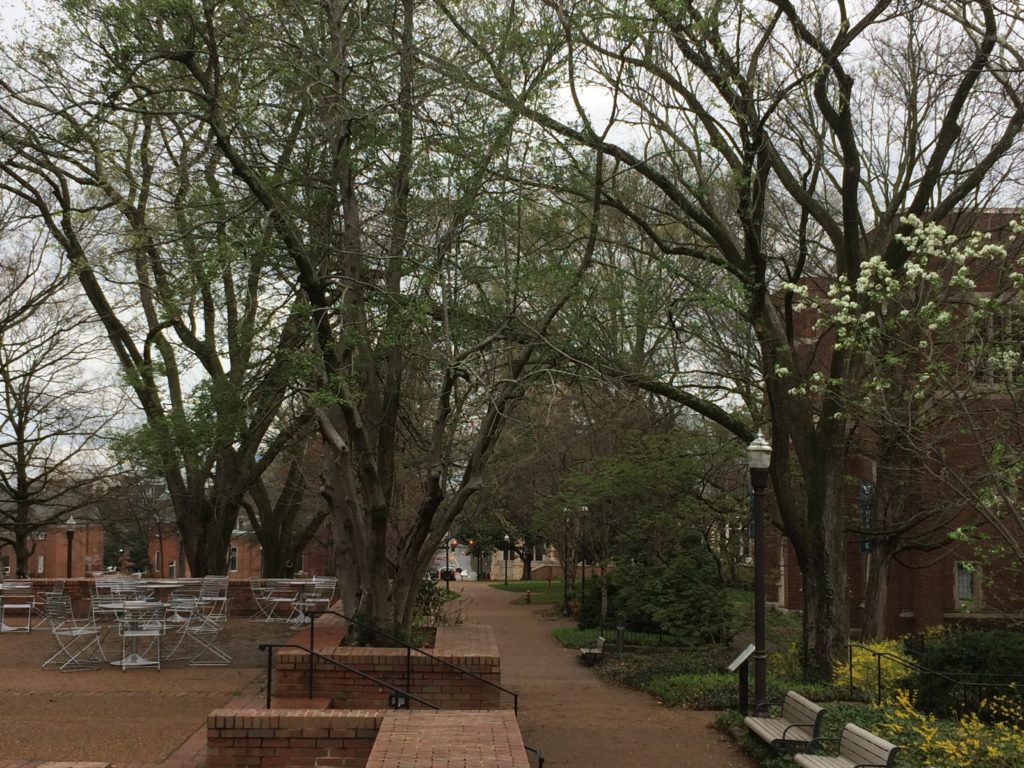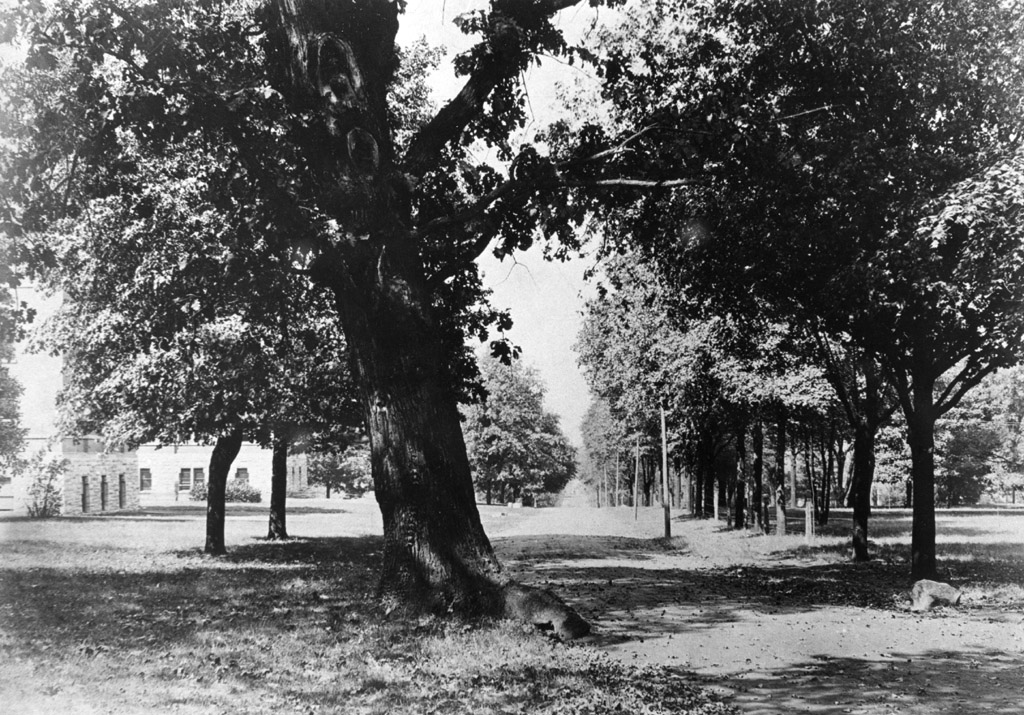History: Alumni Lawn elms

Sidewalk from Rand Terrace to West End Avenue lined by large elms
The sidewalk that leads from Rand Terrace is lined by several large American elms. The practice of planting rows of elms along roads was widespread before the Dutch elm disease killed many of the large elms in the United States. So it should not surprise you to learn that this sidewalk was once a road called “West Avenue” that led from the center of campus to West End Avenue.

The Garland Oak in the center and other trees lining the road from the center of campus to West End Avenue. Vanderbilt University Special Collections and University Archives image PA.CAF.SCEN.007
This photo shows the same location sometime between 1901 and 1910 when West Avenue was a dirt road. The large tree in the foreground is the famous Garland Oak, an overcup oak after which the Rand pub was named. Visible in the background on the left is Kissam Hall, built in 1901 as a dormatory. When it was torn down in 1958, Alumni Lawn was formed in the newly opened space.
There are two smaller trees at the left in the photo. By comparison with the present-day photo, you can see that those trees are in approximately the same location as the two big elms on Alumni Lawn (near tree, far tree). Unfortunately, there isn’t enough detail in the photo to tell whether they are elms (close examination of the leaves in the photo may indicate that they actually were oaks). So we can’t know if they are actually the same trees or not. There are also trees on the right that could be in the location of another large elm currently growing on the east side of the sidewalk. (A fourth elm along the old road closer to Rand is not pictured here.) Even if the present-day elms are not the same as any trees in this photograph, they served the same function: to line West Avenue with their gracefully arching branches.

(left) David Douglas on horse-drawn rake, first superintendent of grounds, (right) Virgil Henley, assistant. Kirkland Hall visible in the distance on right. The trunk of the Garland Oak is barely visible on the left. Photo by Harry S. Vaughn before 1910. From the Vaughn Collection, Vanderbilt University Photographic Archives in McGaw, Robert A. 1978. The Vanderbilt Campus: A Pictoral History, Vanderbilt University Press, Nashville, p. 139.
You may be surprised to know that the campus was not always as manicured as it is in the present. An early campus visitor remarked “the ‘buildings and grounds man’ had a horse-drawn mower and a horse that he stabled on the Vanderbilt campus. The campus then was closed all summer because it was just too hot for classes. He let the grass grow during summer to make hay for the horse, and fed it all winter on the hay.” 1 The photo above shows the groundskeepers with their rake in another photo from the same location as the ones above.
To read more about the history of these and other elms on Vanderbilt campus, see this blog post.
Return to the historical tree tour page for elm tree 3-540.
1 Hogge, Sharon. 1998. The Real Dirt: A History of the Vanderbilt Garden Club for Campus Beautification, The Vanderbilt Garden Club, Nashville, p. 5. Quote of Mrs. Arthur Ingersoll from 1922.
